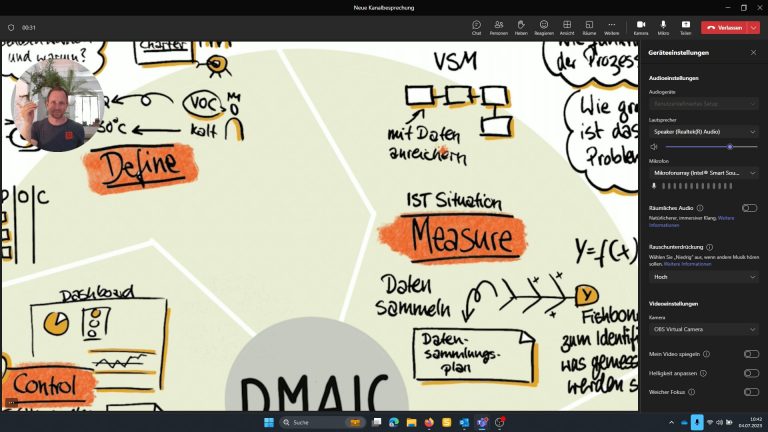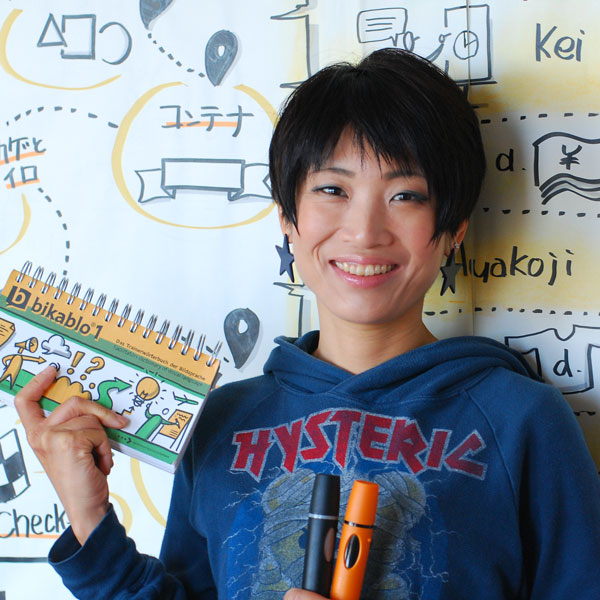Learn Sketchnoting with bikablo – Part 1: What’s the Job of a Sketchnoter?
How can we make information easier to learn? Many people whose professions require them to learn and share complex knowledge ask themselves this question. The creative technique of sketchnoting makes it easier to retain nuggets of information – and sharing information is one of the things we at the bikablo akademie love to do best.
by Martin Haussman
SHARE ARTICLE
Sketchnoting – what is that?
You know how it goes: after a long strategy meeting or an in-depth technical conversation, your head is spinning. Not much of the lengthy PowerPoint presentation has stuck in your brain – except that there were a lot of bullet points. And when you glance through your notes later, you realize you didn’t really jot down much of the information.
Before, I used to always catch myself in meetings or lectures doodling little people and patterns onto the corners of my notebook. Today, I still love to do this, but I do so strategically: the sketchnoting technique helps me to understand information, to remember it, and to be able to share it with others – and it’s a lot of fun!
How Does Sketchnoting Work?
With sketchnoting, you record information by using text, graphics, and images. Ideally, this lets you create “knowledge maps” that help you to make what you’ve heard more concrete for yourself. The advantage: it’s not only easier to find the information again, but it’s a lot more fun to look at it in these drawings. And, in the future, you can use them to help you remember what you’ve learned. The reason this works is because your visual notes help link what you’ve already learned in a real-time setting to your brain’s neural network. This also works if you want to learn information through reference books or video tutorials.
MORE ARTICLES ON THIS TOPIC
You Might Also Be Interested In...

How to use your iPad instead of the webcam in MS Teams
Why do I want to connect the iPad to MS Teams (or Zoom)?
I would like to be able to show my iPad Screen as a tile in the normal Teams window. It should be subtle and not by sharing my screen to draw to much attention and to have a seamless switch between different views. I can i.e.
• document the meeting using OneNote or ProCreate
• easily zoom into pictures or drawing
• easily annotate pictures or digital whiteboards
• using the drawing feature while presenting your content

Design Thinking and Visual Thinking – a perfect fit?
In a recent interview Hiromi Hara speaks about her experience with applying the design thinking method with the help of visualization.
Hara explains that design thinking is not primarily about problem solving, rather about unveiling complex problems and getting better insight in the root cause of issues, hence the importance of the expression of individual perception and the comprehensible yet memorable depiction of thinking processes.

Using Visuals in Coaching
How our global trainer Jill Greenbaum got into drawing and which impact visualization has got on coaching situations.
